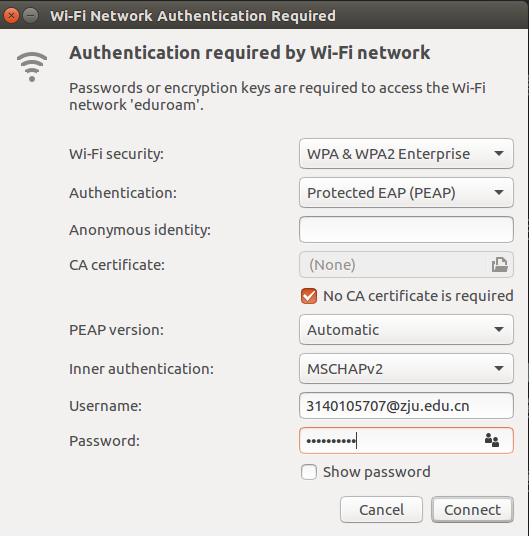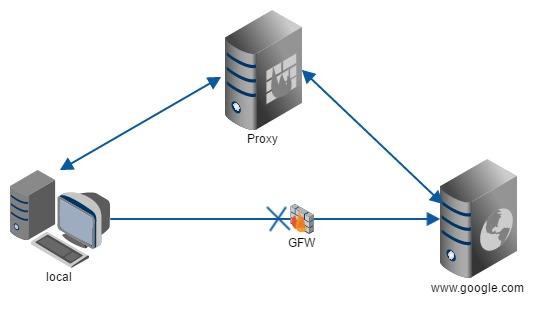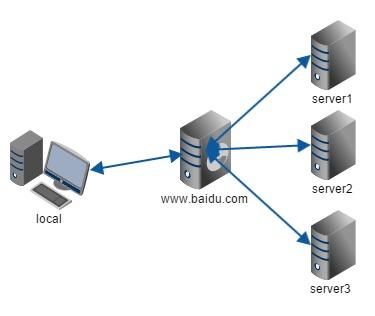网络连接相关问题¶
TCP vs UDP¶
- TCP/IP 是互联网相关的各类协议族的总称,比如:TCP,UDP,IP,FTP,HTTP,ICMP,SMTP 等都属于 TCP/IP 族内的协议。
- TCP/IP模型是互联网的基础,它是一系列网络协议的总称。这些协议可以划分为四层,分别为链路层、网络层、传输层和应用层。

refer to 一文搞懂TCP与UDP的区别
有线连不上¶
手动设置ip IPv4 settings
Address: 10.71.115.59 Netmask: 24 Gateway: 10.71.115.254 DNS server: 10.10.0.21
sudo su
ifconfig enp0s31f6 up
ifconfig enp0s31f6 10.71.115.59 netmask 255.255.255.0 up
ping 10.71.115.254
route add default gw 10.71.115.254 enp0s31f6
ping 10.71.45.100
ifconfig¶
ifconfig is a command line tool for diagnosing and configuring network interfaces (software interfaces to networking hardware).
Two types of network interfaces:
- physical: represent an actual network hardware device such as network interface controller (NIC), e.g.,
eth0represents Ethernet network card (**Note: ** the current names follow the predictable network interface naming, such asenp0s1f6, which consists of the physical position in the pic system, refer to Why is my network interface named enp0s25 instead of eth0?) - virtual:
- loopback
- bridges
- VLANs
- tunnel interfaces
- …
Here is the output of ifconfig on my T460p,
$ ifconfig
docker0: flags=4099<UP,BROADCAST,MULTICAST> mtu 1500
inet 172.17.0.1 netmask 255.255.0.0 broadcast 172.17.255.255
ether 02:42:22:d9:b6:b0 txqueuelen 0 (Ethernet)
RX packets 0 bytes 0 (0.0 B)
RX errors 0 dropped 0 overruns 0 frame 0
TX packets 0 bytes 0 (0.0 B)
TX errors 0 dropped 0 overruns 0 carrier 0 collisions 0
enp0s31f6: flags=4099<UP,BROADCAST,MULTICAST> mtu 1500
ether 50:7b:9d:bd:4a:3b txqueuelen 1000 (Ethernet)
RX packets 0 bytes 0 (0.0 B)
RX errors 0 dropped 0 overruns 0 frame 0
TX packets 0 bytes 0 (0.0 B)
TX errors 0 dropped 0 overruns 0 carrier 0 collisions 0
device interrupt 16 memory 0xf2200000-f2220000
lo: flags=73<UP,LOOPBACK,RUNNING> mtu 65536
inet 127.0.0.1 netmask 255.0.0.0
inet6 ::1 prefixlen 128 scopeid 0x10<host>
loop txqueuelen 1000 (Local Loopback)
RX packets 1525364 bytes 4323602450 (4.3 GB)
RX errors 0 dropped 0 overruns 0 frame 0
TX packets 1525364 bytes 4323602450 (4.3 GB)
TX errors 0 dropped 0 overruns 0 carrier 0 collisions 0
wlp3s0: flags=4163<UP,BROADCAST,RUNNING,MULTICAST> mtu 1500
inet 10.13.59.193 netmask 255.255.128.0 broadcast 10.13.127.255
inet6 fe80::def:d34:a2c:da88 prefixlen 64 scopeid 0x20<link>
ether a4:34:d9:e8:9a:bd txqueuelen 1000 (Ethernet)
RX packets 19688705 bytes 18661301186 (18.6 GB)
RX errors 0 dropped 0 overruns 0 frame 0
TX packets 17848834 bytes 23268449705 (23.2 GB)
TX errors 0 dropped 0 overruns 0 carrier 0 collisions 0
where
lois a special virtual network interface called loopback device. Loopback is used mainly for diagnostics and trobuleshooting, and to connect to services running on local hostdocker0is a virtual bridge interface created by Docker. This bridge creates a separate network for docker containers and allows them to communicate with each other.- flag
UP: kernel modules related to the interface have been loaded and interface is activated.BROADCAST: interface is configured to handle broadcast packets, which is required for obtaining IP address via DHCPRUNNING: the interface is ready to accept dataMULTICAST: the interface supports multicasting
MTU: maximum transmission unit. see also WIKIRX packets: total number of packets receivedTX packets: total number of packets transmitted
Refer to Demystifying ifconfig and network interfaces in Linux, note that some field names are different, such as MAC address, ether vs HWaddr, see also the discussion CentOS 7 - Networking Support: Changing ether to hwaddr
Reboot with
sudo ifconfig enp0s31f6 down
sudo ifconfig enp0s31f6 up
and if necessary, re-install the wifi kernel with
sudo apt-get install bcmwl-kernel-source
Ubuntu连接UWS和eduroam¶
默认情况下一直连接不是,注意选对security,Authentication应当选择PEAP,如图。

阿里公共ADS差评¶
之前轻信了阿里公共ADS,在Ubuntu上装了,链接在此,然而却无法取消设置,restore选项毫无作用。也一直不管它,在枫叶国,竟然连google都ping不通,这就很奇怪了,于是便怀疑是它搞的鬼。
为了彻底根除这个毒瘤,
cd /etc/resolvconf/resolv.conf.d/
sudo vim head
## 删除文件中的所有信息,其实只有阿里公共ads的配置信息
sudo vim head.save
## 删除文件中的所有信息,其实只有阿里公共ads的配置信息
终于好了!
rvpn¶
Ubuntu下配置rvpn,需要浏览器启用JAVA插件,但新版本的chrome和firefox都不支持(firefox 52以后都不行了),解决办法是安装一个旧版本的firefox,然后按照登录rvpn时的说明进行配置就ok了。
proxychains 实现命令行代理¶
参考How to use SOCKS 5 proxy in Ubuntu command line
proxychains curl ifconfig.me
Get Public IP via curl
Available websites:
ifconfig.meipinfo.io/ip
LD_PRELOAD cannot be preloaded¶
在 Ubuntu 16.04 上用得好好的,但是在更新后的 Ubuntu 18.04 上使用时,报出
~$ proxychains ping www.google.com
ProxyChains-3.1 (http://proxychains.sf.net)
ERROR: ld.so: object 'libproxychains.so.3' from LD_PRELOAD cannot be preloaded (cannot open shared object file): ignored.
PING www.google.com (199.16.156.7) 56(84) bytes of data.
参考 proxychains LD_PRELOAD cannot be preloaded,将 /usr/bin/proxychains 中的
export LD_PRELOAD=libproxychains.so.3
改到实际 libproxychains.so.3 的位置,这可以通过 locate 来确定。
另外注意到
~$ proxychains ping www.google.com
ProxyChains-3.1 (http://proxychains.sf.net)
PING www.google.com (199.59.149.244) 56(84) bytes of data.
^C
--- www.google.com ping statistics ---
2 packets transmitted, 0 received, 100% packet loss, time 1019ms
并不会出现类似 curl 时的 chain
~$ proxychains curl ipinfo.io/ip
ProxyChains-3.1 (http://proxychains.sf.net)
|DNS-request| ipinfo.io
|S-chain|-<>-127.0.0.1:30002-<><>-4.2.2.2:53-<><>-OK
|DNS-response| ipinfo.io is 216.239.38.21
|S-chain|-<>-127.0.0.1:30002-<><>-216.239.38.21:80-<><>-OK
hosts文件原理¶
有段时间是采用更改hosts文件来访问谷歌,但其背后的原理一直不甚清楚。突然想到这个问题,看了下面的两个博客,大致明白了。
简单来说,其目的跟dns解析域名一样,但是优先级更高,如果本机hosts文件中已经有了某域名的ip映射,则不需要通过dns返回域名ip。
更多细节可以参考这两个博客
unable to resolve host¶
参考http://blog.csdn.net/ichuzhen/article/details/8241847
Makesure the hostname defined in /etc/hostname also points to 127.0.0.1 in /etc/hosts.
check my /etc/hosts
~$ cat /etc/hosts
127.0.0.1 localhost
127.0.1.1 weiya-ThinkPad-T460p
and also the hostname
~$ cat /etc/hostname
weiya-ThinkPad-T460p
带宽、网速和流量¶
单位:
- 带宽:比特每秒 (bit/s, bps)
- 网速:字节每秒 (B/s KB/s MB/s)
- 流量:字节 (Byte)
带宽给出了理论上下载的最大速度,但实际上,
还有个标准(电信部门给的): - 512k用户的到达测速网站的速度大于 40KByte/s,即320Kbps时是属于正常的; - 1M用户的到达测速网站的速度大于 80KByte/s,即640Kbps时是属于正常的; - 2M以上用户的到达测速网站的速度大于 160KByte/s,即1280Kbps时是属于正常的; - 3M以上用户的到达测速网站的速度大于 240KByte/s,即1920Kbps时是属于正常的;
反向代理¶
浏览博客中看到另一种解决内地 Disqus 被墙的问题,采用 DisqusJS, 其中使用到了反向代理技术。
正向代理代理的对象是客户端,

反向代理代理的对象是服务端

